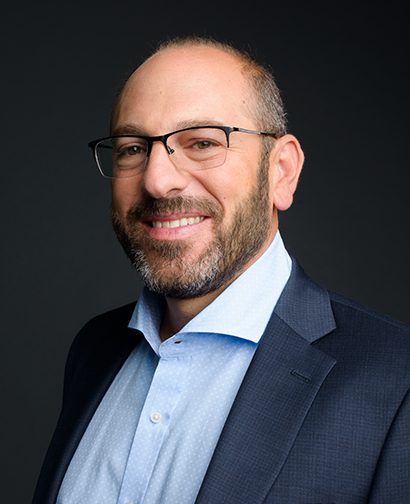
5 Questions with Ronald T. Piervincenzi, Ph.D., Chief Executive Officer, United States Pharmacopeia
“5 Questions With…” is a weekly BioBuzz series where we reach out to interesting people in the BioHealth Capital Region to share a little about themselves, their work, and maybe something completely unrelated. This week we welcome Ronald T. Piervincenzi, Ph.D., Chief Executive Officer, United States Pharmacopeia.
Ronald T. Piervincenzi, Ph.D., has served as Chief Executive Officer of the United States Pharmacopeia since February 2014. Dr. Piervincenzi provides strategic leadership to USP’s global staff of over 1,300 across sites in the US (Rockville, Frederick, D.C.), India, China, Ghana and Switzerland, and global public health field offices including Nigeria, Indonesia, Ethiopia, and Kenya. His transformative vision has launched key USP initiatives in bringing quality across the healthcare spectrum, upholding USP’s reputation as a quality leader since its founding in 1820.
Under his leadership, USP has modernized its operations and launched innovative new science, including in the areas of digital medicine, cutting-edge manufacturing technologies and advanced biologics. More recently, USP has begun building a robust “capability building” services suite of offerings including quality manufacturing consulting, donor-funded work, and education. Dr. Piervincenzi served as Chair of the Council of Experts, USP’s scientific standards-setting body of 24 Expert Committees and over 750 standards-setting experts until June 2015, when he transferred this responsibility to USP’s new Chief Science Officer.
1. Please introduce yourself to our audience with a look back at your education, training, and career.
Upon entering college, my plan was to pursue a profession in computer science. But in a moment of serendipity (online to register for my first semester), I switched majors to bioengineering. I graduated from Hofstra University in 1993 with a Bachelor’s in Engineering and then went on to pursue my Masters and Ph.D. at Duke University in Biomedical Engineering. I had an interest in the business side of science and found a great fit in management consulting at McKinsey & Co. spending 12 years there including election to Partner, primarily focused on the pharmaceutical and biologics industry.
When the opportunity to be the CEO of U.S. Pharmacopeia came along, it was one that I could not pass up. U.S. Pharmacopeia (USP) is an independent global nonprofit that sets quality standards for medicines, supplements and food ingredients in the U.S. and in more than150 other countries. I am so proud to lead an organization that works every day to expand the supply of quality medicines worldwide and has most recently significantly contributed to responding to the COVID-19 pandemic. Throughout the pandemic, we have worked with the U.S. government and practitioners to maximize the number of doses per vial, minimize vaccine waste, and ensure the quality of vaccines, treatments, and preventatives like hand sanitizer throughout the supply chain.
2. For those who don’t know USP and you’re over 200 year history, how would you introduce them to the company?
USP was founded in 1820 by 9 physicians who were concerned about poor quality medicines coming in from England – some literally labeled “good enough for America.” But many of the medicines weren’t “good enough” – they were ineffective at best, and harmful at worst. So these physicians, two of whom were also US Senators, decided to define what “good” was when it came to medicines. And although this was an independent citizen-led effort, since it was one of the first nationwide initiatives for our newly formed country, for symbolic reasons they decided to gather in the US Senate Chamber, on January 1, 1820, to announce their endeavor. Their solution, a reference book of formulations for medicines, became the first national pharmacopeia in the world and their meeting was the first U.S. Pharmacopeial Convention.
Recognizing that the science and practice of medicine is constantly evolving, they committed to re-convene at regular intervals to review and update the contents of the pharmacopeia with the mission of protecting public health by defining what good looks like for the most commonly used medicines and ingredients. That practice has continued without interruption and although the nature of medicines, where and how they are made has changed, 201 years later, our mission remains the same.
3. Why are public standards so important for drugs, supplements and food ingredients?
The first pharmacopeia contained what were in effect recipes for about 70 medicines that were largely plant or mineral based. Today, a USP standard exists to define exactly the composition, the chemicals, the purity, and the performance of how a medicine works, for every medicine in the US and even around the world (over 7,000 standards total).
It is these standards that enable us to trust that when we go to a pharmacy and are given a medicine, we can be confident it is of good quality. As a patient, we don’t need to know who made it or where. An ongoing collaboration between the Regulator (for the U.S., the FDA), industry/manufacturers, and practitioners (especially pharmacists and physicians) ensures that USP standards are fit for purpose and adhered to.
The standard also gives manufacturers confidence in the quality of their raw ingredients. It enables them to request with great specificity the precise quality of everything from ingredients like talc or glycerin, that are fairly common and have uses outside of the pharmaceutical industry, to API’s and even containers and packaging materials. The ability to control quality and consistency from raw ingredients to finished dosage form and throughout shipping and handling is key to ensuring the quality of the medicines, dietary supplements, and foods that consumers and patients receive.
So the simple answer is, by setting specific parameters and tests for quality, a standard ensures consistency in quality for a product regardless of where it is made. That standardization of quality gives healthcare practitioners confidence that the medicines they prescribe and/or dispense will perform as expected and promotes trust among consumers and patients.
4. Usually we ask about the next 5-10 years. Because USP has been around since 1820, what do you see coming over the next 100 YEARS?
Just 100?? I look to the past to inform and inspire tomorrow’s innovation, going back to how medicines were developed 200 years ago. A great example – personalized medicine – where the new normal will be for thousands of therapeutic solutions all being personalized for each of billions of people. That’s what we’re working towards and setting the standards for quality will be as important then as it is today.
Of course, we are investing resources to improve the next 5-10 years as well. The medicine supply disruptions over the past 18 months have been significant. So a key question to ask and answer is “How do we build resiliency in the medicine supply chain?” Not how to make it perfect but how do we best prepare and do all we can to ensure access to quality medicines throughout the world.
5. If you could trade places with any other person for a week, famous or not, living or dead, real or fictional, with whom would it be and why?
I’ll take the tact here to select someone with very different life experience – to experience something quite different than my everyday life. Therefore, I’ll choose working backstage at the 1969 Woodstock festival in Bethel, NY for a week preceding and through the three days festival. Especially if it includes a trailer to get out of the rain and crowds from time to time!
Thank you to Ronald T. Piervincenzi, Ph.D., Chief Executive Officer, United States Pharmacopeia for participating in the 5 Questions with BioBuzz series, and stay tuned for more interviews with others from across the BioHealth Capital Region and beyond.





